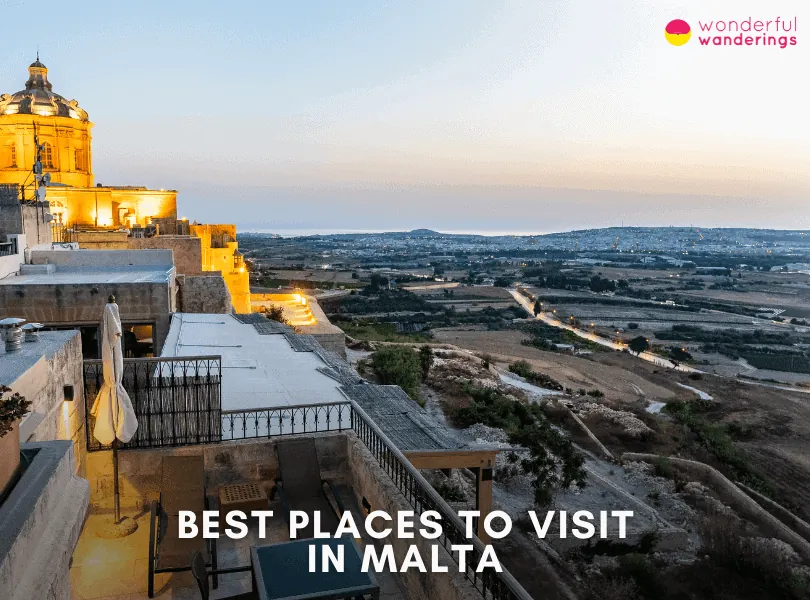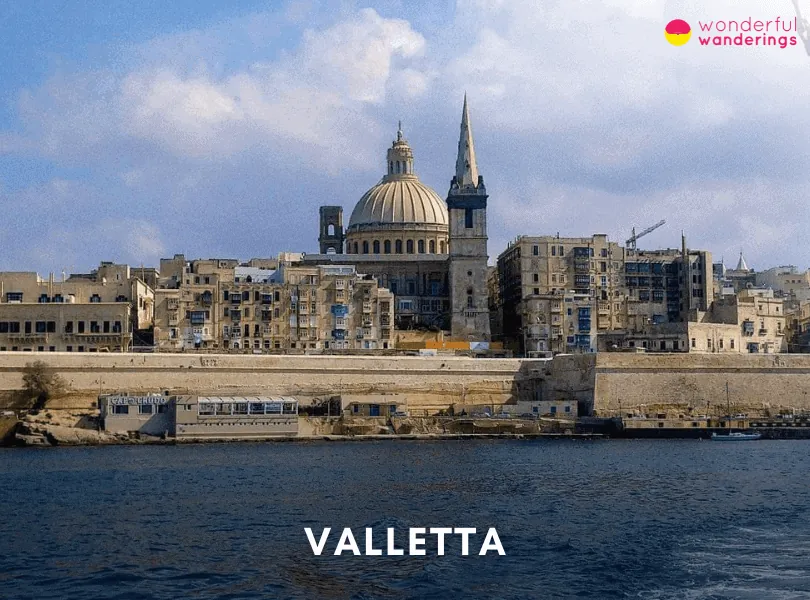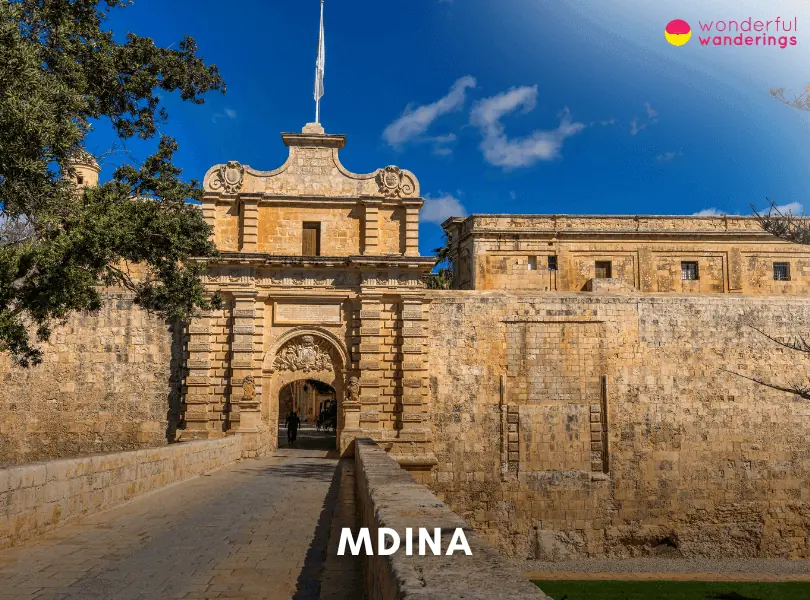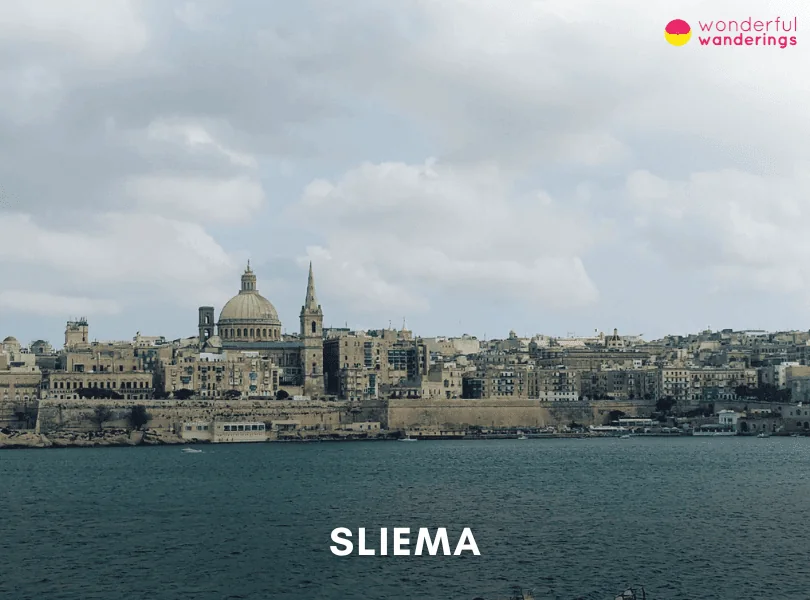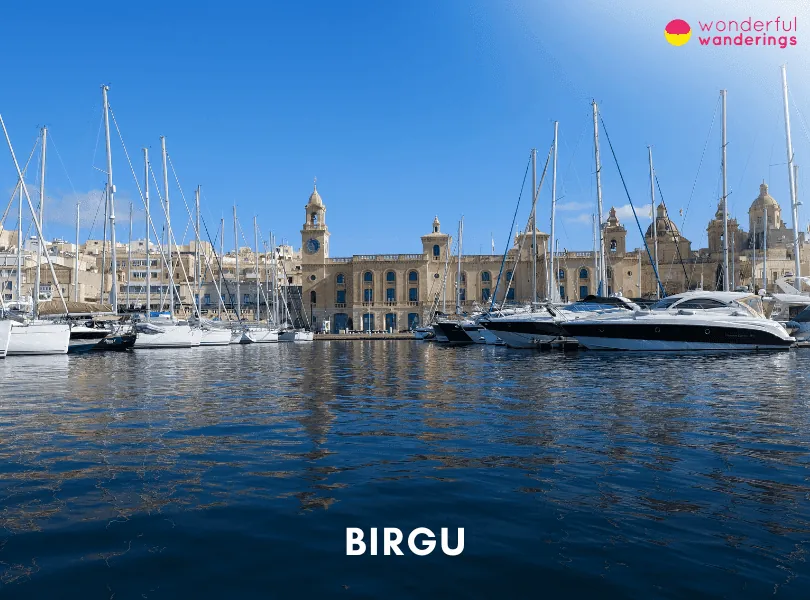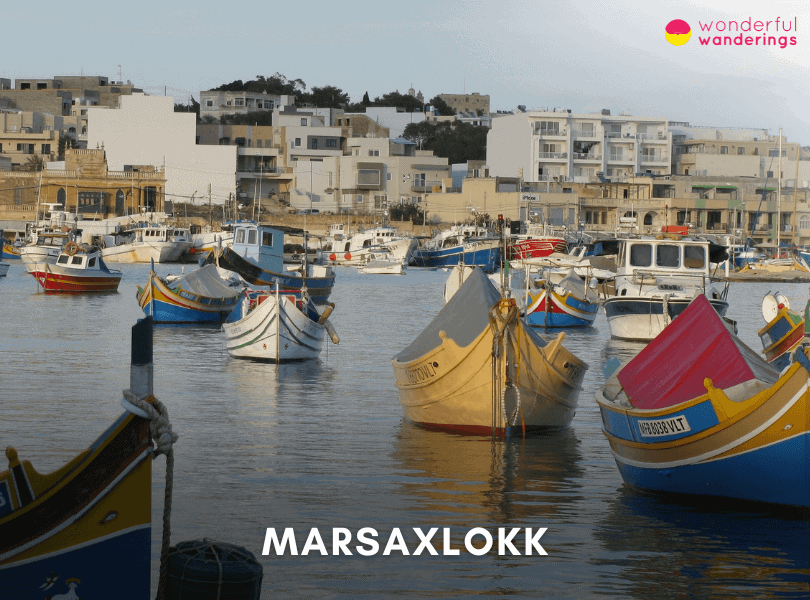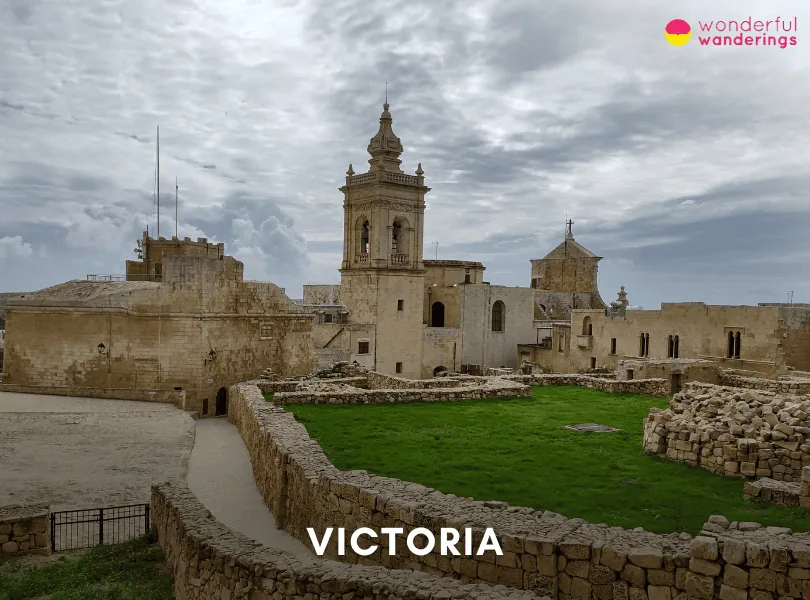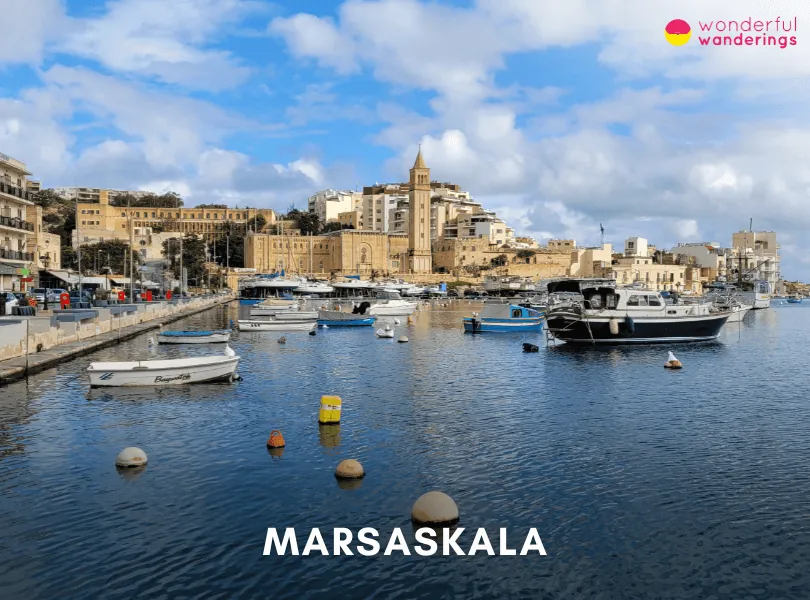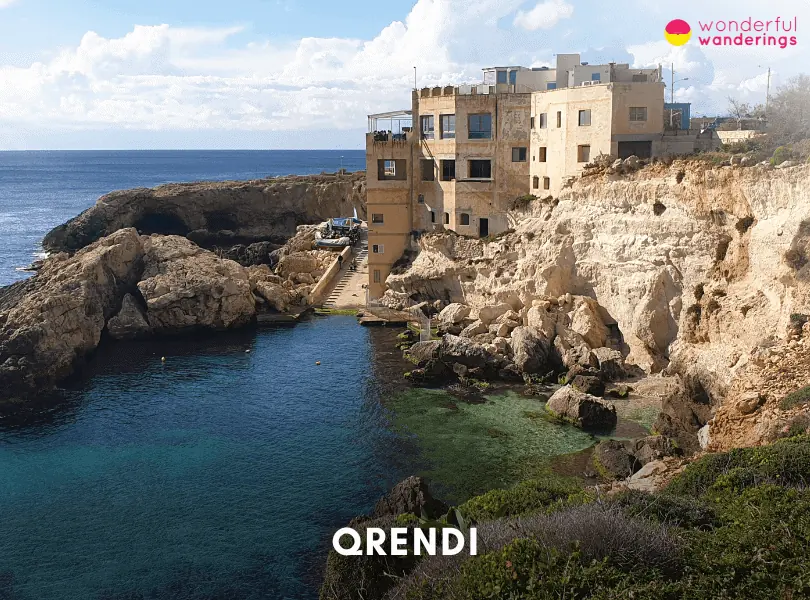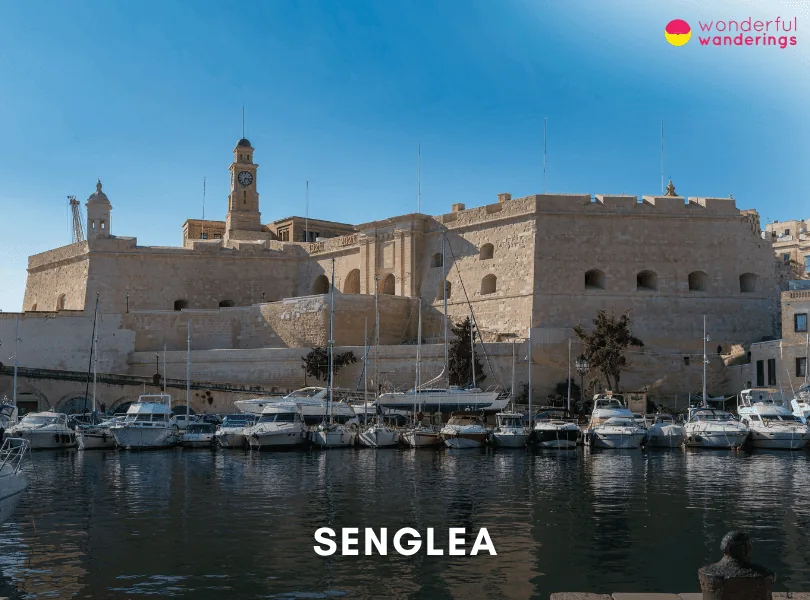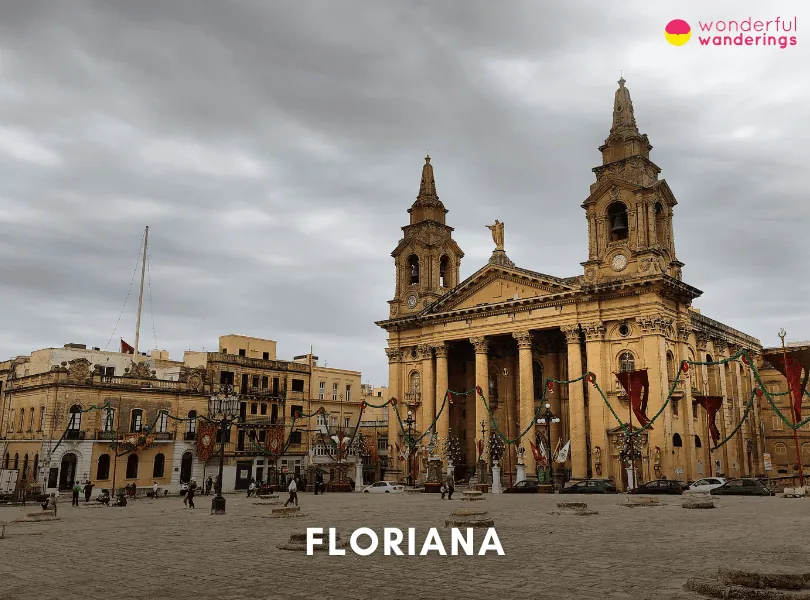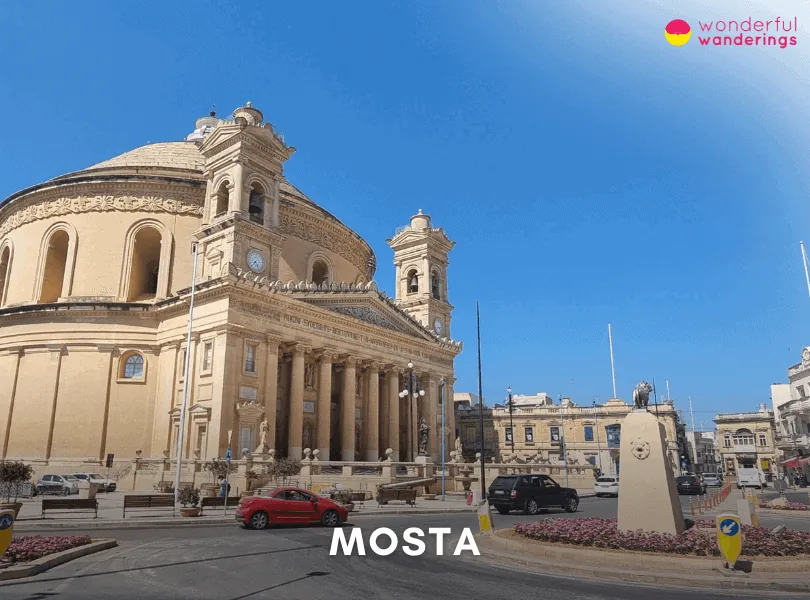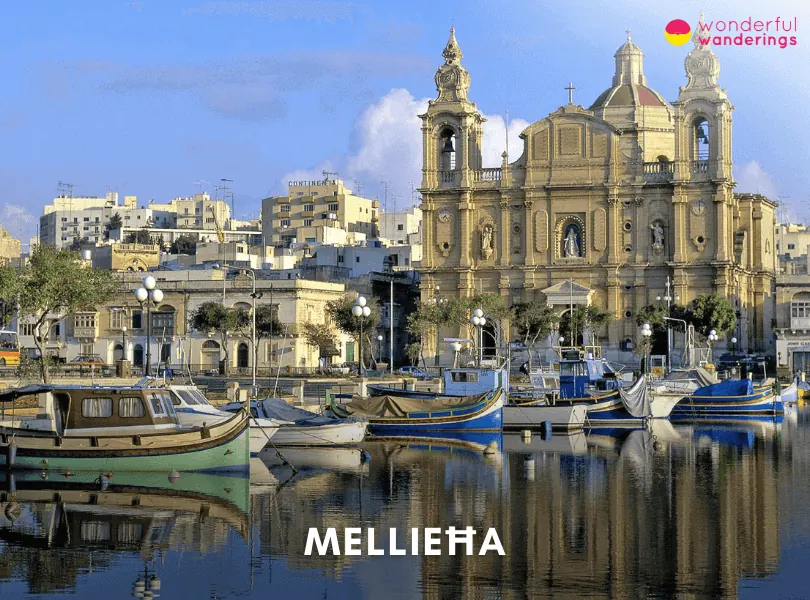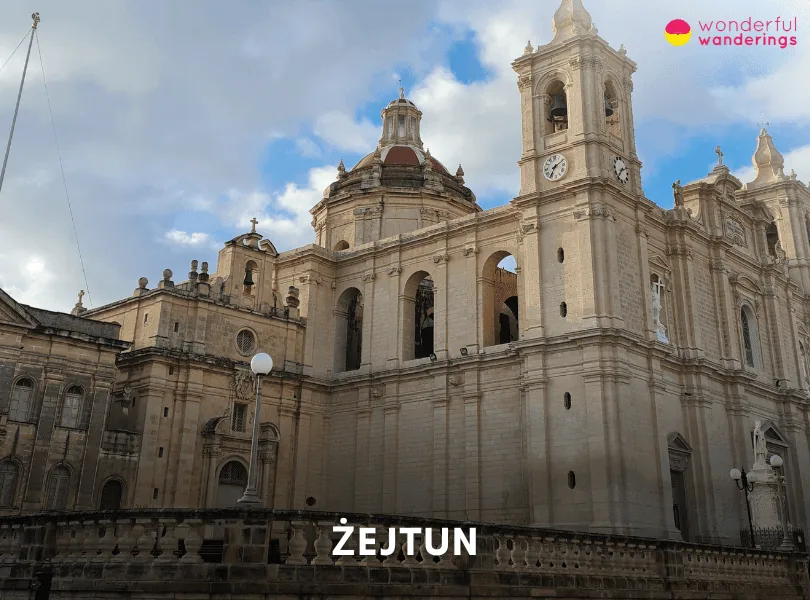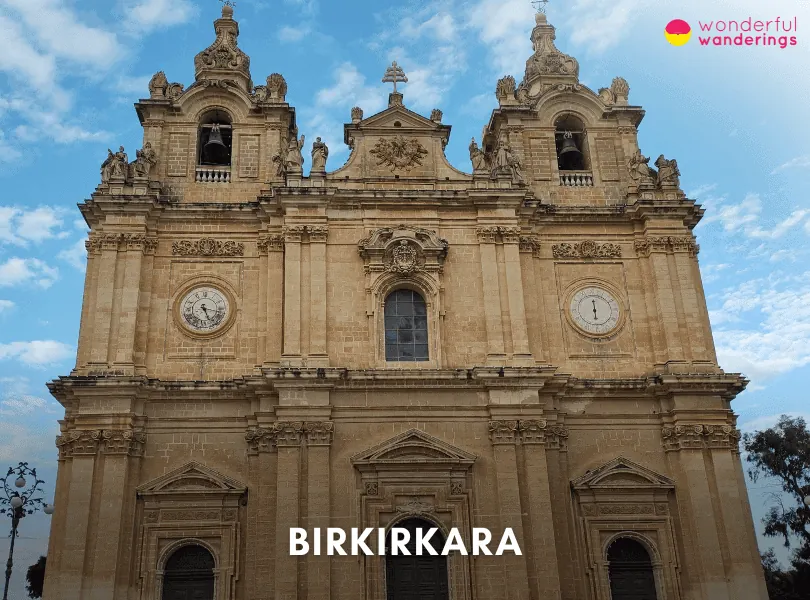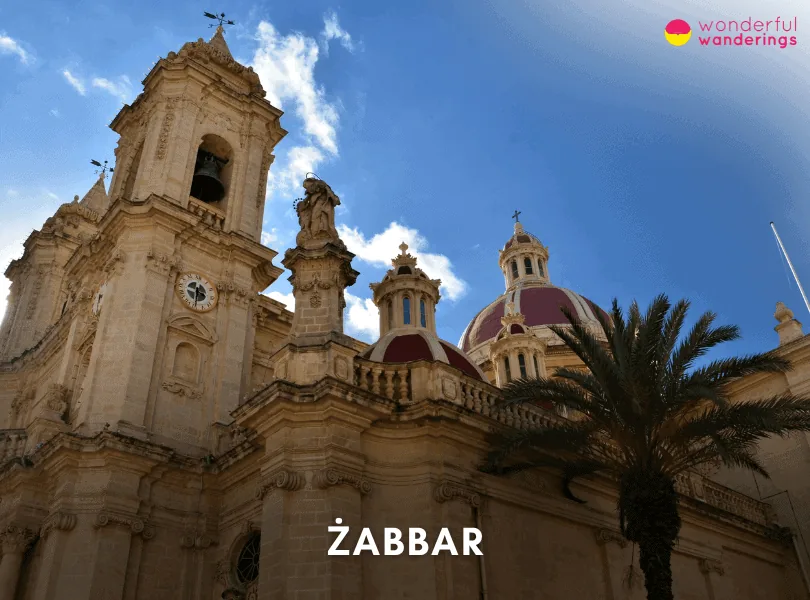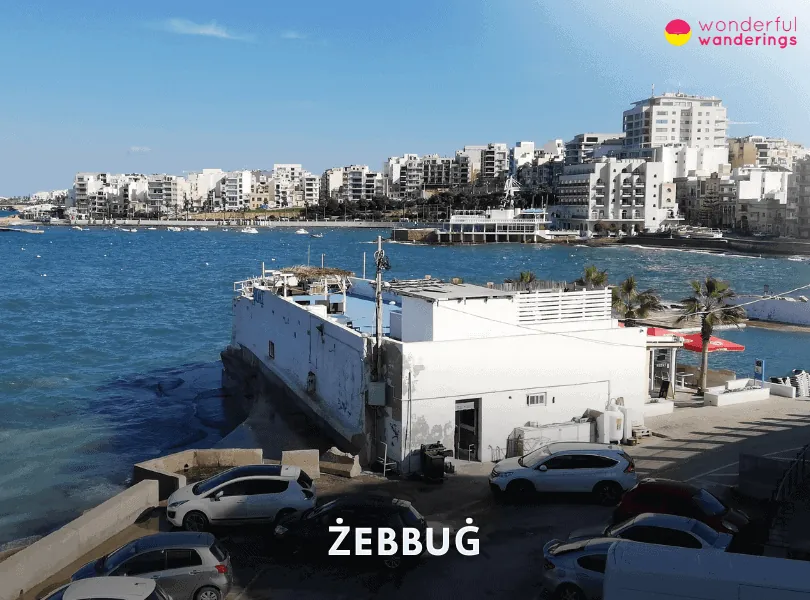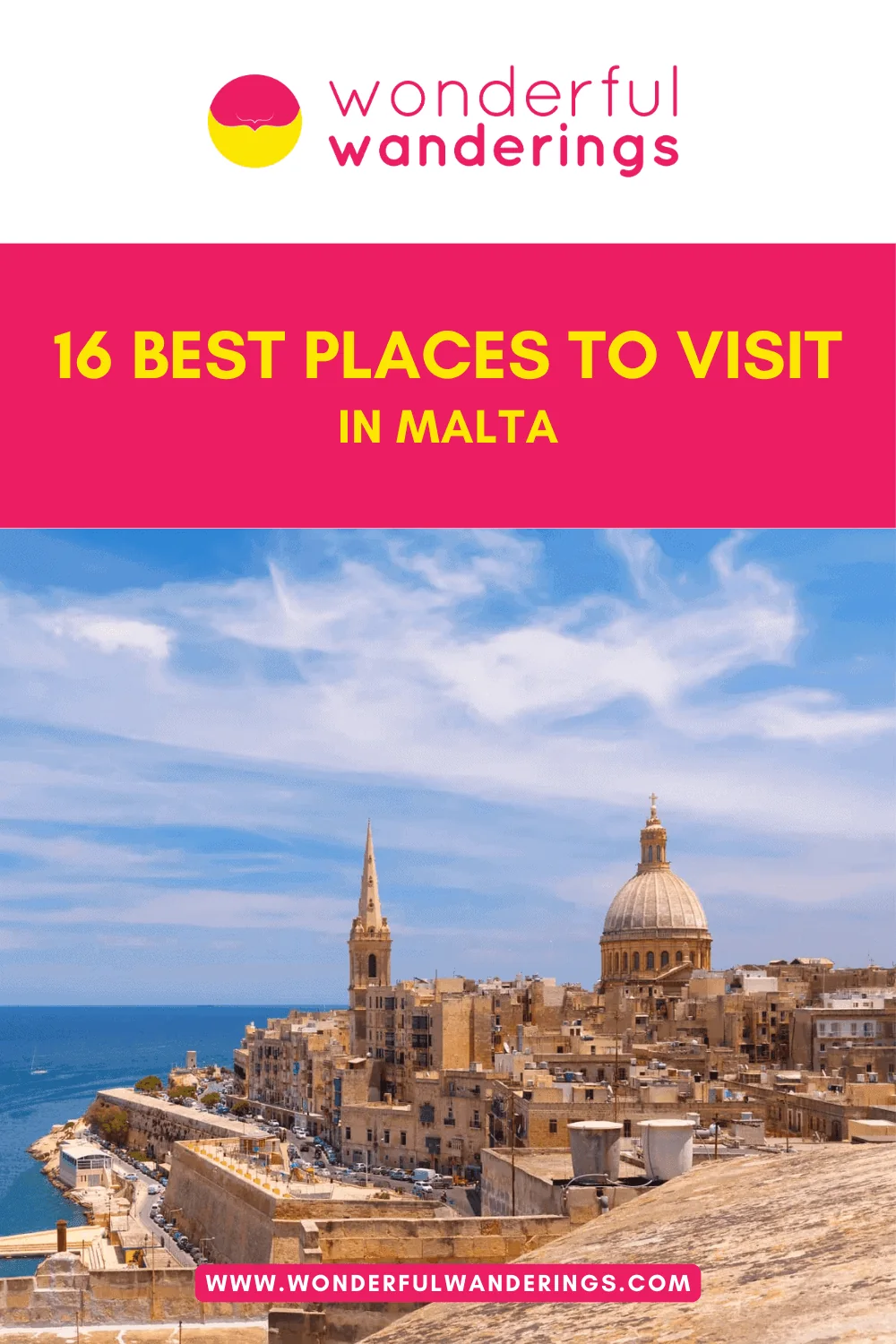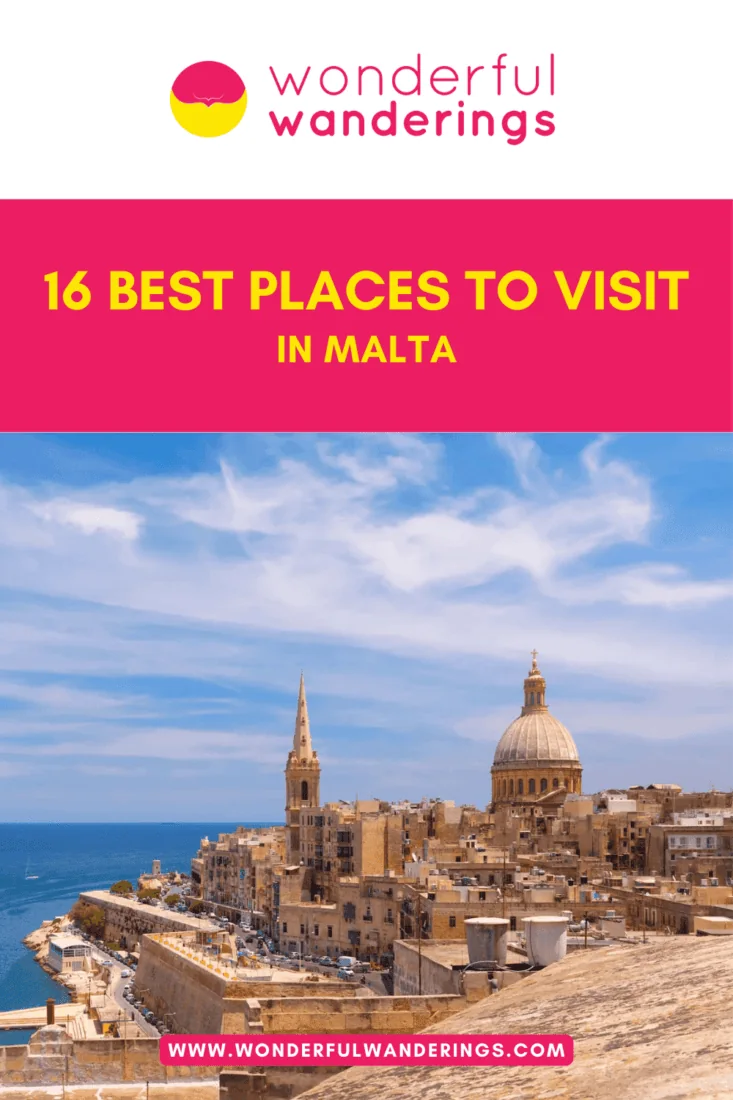Malta, an archipelago in the Mediterranean, offers various destinations suitable for year-round visits. Valletta, the capital, is a UNESCO World Heritage Site. Key attractions include St. John’s Co-Cathedral and the Grandmaster’s Palace. Mdina, Malta’s “Silent City” and former capital. Its highlights include St Paul’s Cathedral and the Mdina Dungeons Museum, best explored in spring and fall. Sliema, a central coastal town, is known for its promenade, shopping and nightlife, with attractions like the Tigne Point Mall and St Julian’s Bay. Birgu or Vittoriosa, is a historic city significant for the Knights Hospitaller and the Great Siege of 1565, best accessed by ferry from Valletta. Marsaxlokk, a traditional fishing village, is famous for its Sunday fish market and waterfront seafood restaurants. The best visiting period is spring, notably April and May. Valletta, the capital, with mild temperatures ranging from 17 ℃ to 23 ℃ (63 ℉ to 73 ℉) during these months. Springtime promises longer, sunnier days and minimal rainfall, best for exploring Valletta’s UNESCO World Heritage sites like St. John’s Co-Cathedral and the Grandmaster’s Palace, the Upper Barrakka Gardens, the Grand Harbour and the Three Cities. Notable facts about Malta include the use of the Euro (€) and widespread acceptance of credit/debit cards. The country operates on Central European Time (CET) and uses type G power plugs. Maltese and English are the official languages, easing communication for tourists. Transportation options in Malta include an extensive public bus system, taxis, car rentals and ferries between islands. Car rental is available, with a minimum age of 21 and a requirement for a valid driving license and often an International Driving Permit (IDP) for non-EU license holders.
- Valletta. Valletta, Malta’s capital, is a harbor city and a UNESCO World Heritage Site with a rich heritage dating back to the 16th century. Valletta is Malta’s administrative and commercial center, attracting over 20,000 people daily for work and tourism. Major attractions include St. John’s Co-Cathedral, the Grandmaster’s Palace and various museums. The best time to visit Valletta is during spring and fall for comfortable sightseeing and a stay of at least two full days is recommended to explore its top sites and nearby attractions.
- Mdina. Mdina, known as Malta’s “Silent City”, is a fortified medieval town, once the capital before being replaced by Valletta in 1571. Its history dates back 4,000 years, with Phoenician, Roman, Arab and Norman influences. Key attractions include St Paul’s Cathedral, Palazzo Falzon, National Museum of Natural History, Mdina Dungeons Museum and panoramic views from Bastion Square. The best time to visit is during spring and fall, with at least a full day recommended to explore its attractions and nearby Rabat. Mdina also serves as a great day trip from Valletta.
- Sliema. Sliema, a central coastal town in Malta, is known for its promenade, shops, hotels and nightlife. The town’s history is rooted in the Knights of Malta, with rapid development in the 20th century. Attractions include the waterfront promenade, scuba diving, ferry trips to Valletta, Tigne Point Mall and St Julian’s Bay. The best time to visit is during the shoulder seasons and a stay of three to seven days is best for enjoying its attractions and exploring nearby areas.
- Birgu. Birgu or Vittoriosa, is a historic city in Malta, significant for its role as the base of the Knights Hospitaller and its pivotal defense during the Great Siege of 1565. Birgu focuses on preserving its heritage. The best way to reach Birgu is by ferry from Valletta, with the town also accessible by bus or car. The best visit time is during spring and fall, with one to two days recommended to experience its historic attractions.
- Marsaxlokk. Marsaxlokk, is a traditional fishing village in southeastern Malta. The village developed around the fishing industry and played a role in WWII. Attractions include the Sunday fish market, waterfront seafood restaurants and nearby beaches like St. Peter’s Pool. The best visit times are spring and fall, with at least half a day needed to explore the village, enjoy a seafood lunch and experience the local market.
Contents
- 1. Valletta
- 2. Mdina
- 3. Sliema
- 4. Birgu
- 5. Marsaxlokk
- 6. Victoria
- 7. Marsaskala
- 8. Qrendi
- 9. Senglea
- 10. Floriana
- 11. Mosta
- 12. Mellieħa
- 13. Żejtun
- 14. Birkirkara
- 15. Żabbar
- 16. Żebbuġ
- What is the best place to visit in Malta during the summer?
- What is the best place to visit in Malta during the winter?
- What is the best place to visit in Malta during Christmas time?
- What is the best time to visit Malta?
- What should you know before traveling to Malta?
- What is the best local food to eat in Malta?
- What are the popular events and festivals in Malta?
- Is it expensive to visit Malta?
- Is it cheaper to visit Malta during Christmas?
1. Valletta
Valletta is the capital city of the island nation of Malta, located in the Mediterranean Sea. It has a rich history as a harbor city and fortress built in the late 16th century by the Knights of St. John. Valletta is located on the east coast of Malta along the Marsamxett and Grand Harbours on a narrow peninsula that extends into the Mediterranean Sea. Valletta’s geographic coordinates are 35.8992° N and 14.5141° E. It lies at sea level with steep streets stepping up from the waterfronts. Valletta lies 5 kilometers (3 miles) south of Malta International Airport. Valletta has over 450 years of history since it was officially founded in 1566 by Jean Parisot de Valette, Grand Master of the Order of St. John. Its initial purpose was to serve as a heavily fortified city and strategic harbor to protect the Knights of Malta and the rest of the island from Ottoman invasions. Much of Valletta was built quickly in the late 1500s as a planned city with advanced fortification designs. Churches and Auberges representing the Knights’ different European languages were also constructed. Valletta later served as a British military base during WWII. Over 75% of its buildings suffered bomb damage, but careful postwar reconstruction restored most of its architectural heritage.
Valletta offers visitors attractions that include the ornate St. John’s Co-Cathedral adorned with Caravaggio paintings; the Grandmaster’s Palace, forts like St. Elmo and St. Angelo; the National Museum of Archaeology and other museums chronicling Malta’s 7,000 years of history; the Upper Barrakka Gardens, the Auberges that housed the Knights of Malta and the Manoel Theatre – one of Europe’s oldest working theaters still in use since 1731.
Valletta is served by Malta International Airport, located 5 kilometers (3 miles) north of Valletta’s city center on the island’s east coast. The short distance makes it extremely easy to reach Valletta from the airport via taxi, bus or rental car in under 15 minutes since Malta is a small island.
The easiest and quickest way to reach Valletta is to fly into Malta International Airport, which offers many connections to major European hubs on carriers like Air Malta, Ryanair and Lufthansa. Airport shuttle buses run directly to Valletta’s city gate every 30 minutes, taking 15-20 minutes. Drivers can also follow well-marked routes into Valletta in less than 15 minutes. The best time to visit Valletta is during the shoulder seasons of spring (April – May) and fall (late September – November. Summer heat and crowds peak in July/August, while winter tends to be damp and chilly. 4-5 days allow time to take day trips to places like Mdina, the Three Cities or Malta’s ancient temple sites.
2. Mdina
Mdina, also known as Malta’s “Silent City”, is a medieval town on the northern edge of the island nation of Malta. It is located in the northern region of the main island of Malta, 9 kilometers (5.6 miles) southwest of St. Paul’s Bay and the coastline. Its coordinates are 35°53′N 14°24′E. The entire walled area of Mdina occupies 0.9 square kilometers (0.35 square miles), with under 400 full-time residents today. Mdina lies less than 12 kilometers (7.5 miles) from Malta’s modern commercial hub of Birkirkara and 15 kilometers (9.3 miles) southwest of the current capital city Valletta. Mdina has an extraordinarily long history stretching over 4,000 years. The site was first settled 800 BC by Phoenicians and Roman colonists. It served as the central stronghold for the Roman administration of Malta for six centuries. Valletta became the new capital, but Mdina remained the Maltese nobility’s base through the 18th century with many Baroque enhancements. Despite damage in WWII, its immense cultural heritage led to UNESCO recognition.
Top attractions drawing visitors to Mdina include exploring its walled city like the Mdina Main Gate, St Paul’s Cathedral, Palazzo Falzon Historic House Museum, the National Museum of Natural History and the Mdina Dungeons Museum. The closest international airport to Mdina is Malta International Airport, located 13 kilometers (8 miles) southeast. Mdina lies 15 kilometers (9.3 miles) southwest of Valletta, the present-day capital of Malta. By car, the drive between the two city centers takes 25 minutes via the Mdina Road and Valletta Road routes. Several buses also connect Mdina to Valletta daily, taking 35-45 minutes each way.
The easiest and most common way for visitors to reach Mdina is by bus from other destinations in Malta. Standard bus fares are €1.50 ($1.65, £1.35) each way. Rental cars are also famous for flexibility in exploring beyond Mdina, with the drive from Valletta taking 25 minutes when direct. The best time to visit Mdina is during the shoulder seasons of spring (April – May) and fall (September – October) when daytime temperatures average 25°C (77°F) and tourist crowds are smaller than in peak summer. For two days. it allows more relaxed exploration and experience in nearby Rabat.
3. Sliema
Sliema is a central coastal town and commercial area located on the northeast coast of Malta along the St. Julian’s Bay inlet overlooking Valletta. It occupies a rocky peninsula on the northeastern coast of Malta across Marsamxett Harbour from Valletta at 35.9124° N, 14.5018° E. Sliema stretches for 3 kilometers (2 miles) along the coastline and inland. Sliema had 20,000 permanent residents within the town proper. Malta’s capital, Valletta, sits directly across Marsamxett Harbour, 2 kilometers (1.2 miles) south of Sliema. Malta International Airport lies 8 kilometers (5 miles) away. Sliema has humble origins as a small fishing village and fort developed by the Knights of Malta in the mid-16th century to guard Marsamxett Harbour. Over the centuries, various chapels, forts, towers and batteries were constructed around Sliema. Rapid commercial and residential development transformed Sliema in the 1930s, quadrupling its population over a few decades and replacing most old buildings with modern hotels and apartments to become Malta’s main coastal tourism town.
Sliema offers a seaside promenade with cafes, shops and restaurants and easy access to exploring Valletta. Top attractions include the Sliema waterfront to people watch, gazing across to Valletta’s bastions, scuba diving to underwater wrecks, ferrying across Marsamxett Harbour to Valletta, shopping at the large Tigne Point mall, swimming at Qui-si-sana or sandy St Julian’s Ba. Sliema is 8 kilometers (5 miles) northeast of Malta International Airport. The airport serves European destinations on carriers like Air Malta, Ryanair and Lufthansa. Sliema also sits directly across Marsamxett Harbour from Malta’s capital and principal city, Valletta, 2 kilometers (1.2 miles) away.
Sliema is easily accessible by ferry from Valletta, which connects the two harbor towns in 5 minutes. Buses from all over Malta pass through Sliema frequently as well. Getting around Sliema is best done on foot, given its compact size and waterfront. The best times to visit Sliema are the shoulder seasons of April-June and September-November when the weather is sunny, but there are fewer summer crowds. July-August can be very hot, busy and expensive in Malta. Winters tend to be calmer and rainier. 3 days in Sliema could take to the waterfront promenade, gaze at Valletta’s views, enjoy cafes and restaurants, take a day trip to places like Mdina and experience Sliema’s nightlife.
4. Birgu
Birgu, also known as Vittoriosa, is a fortified city on Malta’s south side of the Grand Harbour. Birgu was the de facto capital until Valletta’s construction. This legacy remains evident through landmarks like the Inquisitor’s Palace, stately homes and marble streets. Birgu is located on the southeastern coast of Malta along the Grand Harbour, occupying the Birgu peninsula that juts into the harbor’s waters. Its coordinates are 35.8881° N, 14.5221° E. Birgu sits across the harbor from the capital city, Valletta, facing the Three Cities area, including Senglea and Cospicua. Birgu has a long and storied history, being among the first areas settled in Malta since Phoenician times. The Normans later built a castle and new fortifications to protect the growing port. In 1530, Birgu became the base of the Knights Hospitaller, who heavily fortified the city, including the iconic Fort St. Angelo. Birgu served as Malta’s capital for over 40 years, withstanding threats like the Great Siege in 1565 against Ottoman invaders. After Valletta succeeded as capital, Birgu retained military relevance, housing British forces into the 20th century.
Top attractions in Birgu include the Inquisitor’s Palace housing displays on the courts and torture methods, Fort St. Angelo and walks along the Collacchio to see well-preserved Knights’ residences. The Maritime Museum exhibits Malta’s naval history, while the Malta at War Museum documents the country’s experiences in WWII with artifacts and stories. St. Lawrence Church’s ornate Baroque interior and status as one of Malta’s oldest parishes are captivating. The closest international airport to Birgu is Malta International Airport, located 8 kilometers (5 miles) southwest. Birgu lies directly across the Grand Harbour from the modern capital city of Valletta, the distance between them is short. Even driving around the harbor, the route is 3 kilometers (1.9 miles) between city centers, a drive of 10 minutes.
The easiest way to reach Birgu is by ferry and ferry operators offer routes between Valletta and Birgu’s docks beside the historic center. Ferries run regularly daily with standard daytime tickets at €1.50 ($1.65, £1.35). The other option is driving or riding the bus around the harbor, a 10-minute journey but less direct. The best times to visit Birgu are the shoulder seasons of spring (April- May) and fall (late September – October) when pleasant temperatures in the low to mid 20°Cs (70s F) prevail. Summer heat and crowds peak in July and August, while winter months see some rainy days and attraction closures. 1 full day allows time to explore its medieval lanes and museums unhurriedly. It can also be seen as a half-day trip from nearby bases like Valletta, where most visitors lodge.
5. Marsaxlokk
Marsaxlokk is a small, traditional fishing village located in southeastern Malta along Marsaxlokk Bay. It is located on the southeastern coast of Malta in the South Eastern Region, 35 kilometers (22 miles) southeast of the capital Valletta. It sits on a bay bearing its name, Marsaxlokk Bay, at coordinates 35.8422° N, 14.5428° E. The closest major town is Żejtun located 4 kilometers (2.5 miles) northwest of Marsaxlokk. Malta’s historic capital Mdina lies 17 kilometers (11 miles) west. Malta International Airport sits 30 kilometers (19 miles) away to the northwest. Marsaxlokk has a long history dating back over 2,000 years. The Phoenicians, Carthaginians and Romans all used its natural harbor as a strategic port in ancient times. Its harbor hosted the Royal Navy in WWII and later the Malta International Power Summit between Bush and Gorbachev in 1989.
Marsaxlokk’s biggest attractions are its harbor with traditional, colorfully-painted luzzu boats, the open-air market along the waterfront and the seaside atmosphere perfect for relaxing at an outdoor cafe. Marsaxlokk is located 35 kilometers (22 miles) by road from Malta International Airport to the northwest. The drive takes 45 minutes. The best way to reach Marsaxlokk is by car or bus from Malta International Airport or Valletta. Multiple buses run the route from Valletta to Marsaxlokk daily, taking an hour. Drivers can reach Marsaxlokk via the main Marsaxlokk Road from the airport or Valletta in 45 minutes. Tour groups also offer day trips to Marsaxlokk by bus or boat. The best times to visit are spring and fall when temperatures are mild. Marsaxlokk also hosts festivals in summer. Avoid the hot July-August peak season or cooler winter months when some cafes close. The best stay length is 1 day to wander and take photos, have a long lunch of fresh seafood and buy souvenirs at the market.
6. Victoria
Victoria, also known as Rabat, is a historic fortified town located in the center of the island of Malta. It has been the main settlement on Gozo, Malta’s second-largest island, for centuries. Victoria is located in the geographic center of Gozo, Malta’s northernmost inhabited island. Its coordinates are 36.0447° N and 14.2410° E, placing it exactly in the middle of the island. Gozo lies a 25-minute ferry crossing north of the main island of Malta. Victoria is 11 kilometers (7 miles) southwest of Mgarr Harbour, Gozo’s main ferry terminal for boats from Malta. Gozo covers 67 square kilometers (26 square miles) with 30,000 total residents, so Victoria occupies a very central location on the island. Its altitude at the center of town is 195 meters (640 feet) above sea level. Victoria has a long history dating back over 7,000 years to Gozo’s first Neolithic settlers. They named it “Rabato” meaning suburb, as it was subordinate to their capital in nearby Mdina, Malta. The city walls and most buildings date to the Knights’ rebuilding. Gozo was heavily bombed in WWII damaging Victoria. Restoration returned it to its historic glory. As Gozo became more autonomous, Victoria was named the administrative capital in 1987.
Victoria attractions include the Cittadella fortress, the Cathedral of the Assumption showcasing Maltese Baroque style and the Pjazza San Ġorġ central square by historic buildings like the Gothic church of St George. The closest airport to Victoria is Malta International Airport located on the main island of Malta. Victoria is not located near any other capital cities on the Maltese islands. It sits a 25-minute ferry crossing north of Valletta, the capital of Malta itself. The only way for visitors to reach Victoria is by ferry, as there are no airports on Gozo and it is an island. Frequent vehicle and passenger ferries operate across the Gozo Channel between Ċirkewwa Harbour on Malta and Mġarr Harbour on Gozo throughout the day. Return fares start from €4.65 ($5.10, £4.15) per person.
The best time to visit Victoria is during the warm and sunny months of late spring through early fall, from May to October, when average temperatures 25°C (77°F) prevail. This allows enjoying sightseeing along with outdoor cafés and village festivals without extreme heat or rain. Two full days are enough to see the top attractions in Victoria itself at a relaxed pace.
7. Marsaskala
Marsaskala is a seaside town located in the South Eastern Region of Malta. It has a population of 12,000 people and is a popular tourist destination known for its sandy beaches, restaurants and maritime heritage. Marsaskala is located along the southeastern coast of the main island of Malta, 9.5 kilometers (6 miles) from the capital city Valletta. It sits on Marsaskala Bay with coordinates of 35.8628° N and 14.5697° E. To the north is the town of Żejtun, to the west is Marsaxlokk and to the south is the village of Birżebbuġa. Marsaskala has a long history dating back thousands of years. In the Roman period, it was known as Portus Salini from the presence of salt pans used to produce salt from seawater. Remains of Roman baths can still be seen today. In the 16th and 17th centuries, Marsaskala was fortified with towers, trenches and batteries as a defense against Ottoman invaders. Efforts have been made to preserve its coastal heritage while developing amenities and attractions for visitors.
The main attractions in Marsaskala include its beaches, coastal scenery, historic towers, restaurants, salt pans, caves and walks. Popular beaches in Marsaskala include St Thomas Bay, Pretty Bay and Il-Maghluq. Historic sites like St Thomas Tower and the Red Tower provide glimpses into Marsaskala’s past as a defensive outpost. The nearest airport to Marsaskala is Malta International Airport, located 11 kilometers (7 miles) away. The capital city Valletta is 9.5 kilometers (6 miles) from Marsaskala. The most convenient and fastest way to get to Marsaskala is by bus. Regular bus services are run from Valletta Bus Terminal to Marsaskala, with route numbers 91, 92 and 93. The journey takes 40 minutes. Tickets cost €1.50 ($1.65, £1.30).
The best time to visit Marsaskala is during the summer months between June and September. Spring and autumn are also nice times to visit when temperatures are milder. September to November sees fewer crowds. Winter is the least best time for beach activities as the sea is too cold for swimming. The main attractions and beaches in Marsaskala can be seen in 1-2 days. Most visitors stay for 3-5 days which allows time to relax on the beaches, dine at different restaurants, take a boat trip and do some day trips to other Maltese towns nearby like Marsaxlokk.
8. Qrendi
Qrendi is a small village located in the Southern Region of Malt. It has a population of 3,100 and is best known as the site of the famous Ħaġar Qim and Mnajdra Temples – megalithic structures dating back over 5,500 years to the Ġgantija phase in Malta. Qrendi is located in the Southern Region of Malta, at 35.8343° N, 14.4578° E. It sits close to the towns of Mqabba, Siġġiewi and Żurrieq. Qrendi has a long history dating back to the Neolithic period based on archaeological evidence. The modern village of Qrendi developed later, taking its name from a Maltese verb meaning “to worship” due to the religious sites nearby. It was established as its parish in 1618. Qrendi village largely retains its rural character while the Ħaġar Qim and Mnajdra sites tie it to Malta’s ancient past.
The main attractions in Qrendi are the monumental Ħaġar Qim and Mnajdra temple complexes dating back over 5,500 years and the height of Maltese megalithic architecture. The area also offers coastal landscapes like the Blue Grotto and salt pans of Wied Żurrieq along the Dingli Cliffs. Other top sites include the Chapel of St Matthew, the Dejma Cross at Misraħ Kola, the large Tal-Maqluba sinkhole and Punic tombs and Cart Ruts showing ruts created by prehistoric transport carts. Qrendi is located 19 kilometers (12 miles) southwest of Malta International Airport by car, a 25-minute drive. The village is not the nation’s capital. It lies 14 kilometers (9 miles) southwest of Malta’s former historic capital Mdina in the center of the island, a 20-minute drive. The current capital Valletta is also located 14 kilometers (9 miles) northeast of Qrendi.
The easiest way to reach Qrendi is by rental car from Malta International Airport or Valletta, following well-marked main roads and highways. Multiple buses connect Qrendi to the airport, Valletta and other destinations like Mdina or Marsaxlokk daily. The bus from Valletta takes 45 minutes. Many tours offer excursions to Ħaġar Qim and Mnajdra temples including transport. The best times to visit Qrendi are spring and autumn when temperatures are mild. Summers can be hot while winters are a bit rainy. The best stay is a full day to see Ħaġar Qim and Mnajdra temples plus coastal sights like the Blue Grotto.
9. Senglea
Senglea, also called Isla, is a fortified city located on the narrow Senglea peninsula jutting into Malta’s Grand Harbour opposite the capital Valletta. This “city built on rock” captivates visitors with its harbor views, bastions and churches and fishing village. Senglea lies on the eastern side of the Grand Harbour in Malta, directly south of the capital city Valletta. Its coordinates are 35.8879° N, 14.5167° E. It is part of the collective area known as the Three Cities including Cospicua and Vittoriosa (Birgu). Senglea’s small peninsula was first fortified in the mid-16th century when the Order of Saint John settled in Malta and constructed the first harbor fortification of Fort St. Michael. In 1565, a new city was laid out to bolster defenses against an expected Ottoman attack. The name comes from Grand Master Claude de la Sengle. The Great Siege soon after devastated the new city but it was quickly rebuilt.
Top attractions drawing visitors to tiny Senglea include the harbor views, the Maritime Museum and the l-Isla Coronation of Our Lady Museum housed in historic buildings that exhibit Senglea’s rich history and culture. The closest international airport to Senglea is Malta International Airport, located 10 kilometers (6 miles) southwest with a drive time of 15-20 minutes depending on traffic. Senglea directly faces Valletta across a narrow creek, the distance to Malta’s capital city is short. Even driving the harbor, the route is 4 kilometers (2.5 miles) between city centers.
The easiest way to reach tiny Senglea is by ferry. Very frequent and affordable boat crossings operate across the Grand Harbour every 30 minutes, linking Senglea’s docks to Valletta’s waterfront in 5 minutes. The distance is over 1 kilometer. One-way fares are €1.50 ($1.65, £1.35). The best times to visit Senglea are the shoulder seasons of late spring (May) and fall (late September-October). The summer heat and crowds peak in July-August while winter can see some rainy or windy days. One full day allows time to see top sights like the basilica and museums. It also works well as a half-day trip from nearby Valletta where most visitors stay.
10. Floriana
Floriana is a town located in the Central Region of Malta, bordering the capital city, Valletta. It is known for its gardens, public squares and a rich history that dates back to the 16th century. Floriana is located outside the capital city of Malta, Valletta. It lies to the west of the Grand Harbour and serves as the gateway to the capital. The geographical coordinates of Floriana are 35.8922° N, 14.5036° E. The history of Floriana is tied to the military history of Malta and its strategic importance during the rule of the Knights of St. John. The town’s fortifications were constructed to protect the outer approaches to Valletta. It has been the site of several important events in Maltese history, including celebrations and has evolved into a significant urban area with its own unique identity.
Floriana is home to several main attractions, including the Argotti Botanical Gardens, the Wignacourt Water Tower and the Floriana Lines. The Msida Bastion Garden of Rest is a maintained cemetery and garden. The town’s central location makes it a hub for various cultural events and its to Valletta means that visitors can easily explore the capital’s rich history and attractions. The nearest airport to Floriana is Malta International Airport, 6 kilometers (3.7 miles) away. The capital city, Valletta, is adjacent to Floriana, with the two localities being next to each other. The best way to get to Floriana is through Malta International Airport. The bus system in Malta is extensive and provides a cost-effective way to travel. Taxis are also available and offer a faster. The best time to visit Floriana is during the spring (April to June) or autumn (September to November) months when the weather is pleasant and the town is less crowded. These periods offer comfortable temperatures for exploring the outdoor attractions. 2-3 days is recommended to explore Floriana and attend local events or explore the area more.
11. Mosta
Mosta is a town located in the Northern Region of Malta, with 20,000 residents. It is one of the larger towns outside the busy northern harbor area. Mosta is located in the Northern Region of Malta at latitude 35.9094° N, 14.4259° E, 11 kilometers (7 miles) from the Grand Harbour area and capital Valletta. Mosta is connected to neighboring towns like Naxxar and Lija, forming part of the greater Valletta metro area. Mosta has a long history, with Punic and Roman remains found in the area. Mosta began to expand in the 19th century under British rule. During World War II, Malta endured heavy bombardment and Mosta was hit in April 1942 when a 200kg bomb pierced the Rotunda’s dome but did not explode, sparing over 300 people gathered inside and leaving the structure intact, deemed a miracle.
Mosta’s main attractions are Mosta Rotunda, one of Europe’s largest church domes, Ta’ Bistra Catacombs, Mosta Bride’s Garden, the Speranza Chapel and Mosta’s cliffs dotted with natural caves and shelters used during WWII bombings. Mosta lies 11 kilometers (7 miles) southwest of Malta International Airport and 15 kilometers (9 miles) from the capital Valletta, making it easily accessible. By car, Mosta is a 15-20 minute drive from both the airport and Valletta. Direct public buses also connect Mosta to Valletta in under 30 minutes.
The best way to reach Mosta is by rental car or bus from Malta International Airport or Valletta. Multiple direct bus routes connect Mosta to Valletta daily, taking 25-30 minutes. Drivers can easily reach Mosta from the airport or Valletta by following marked roads and highways, with the drive taking 15-20 minutes. Mosta’s compact town center and top attractions like Rotunda church are walkable. The best times to visit Mosta are spring and autumn when the weather is mild and comfortable for walking. Summers can get hot while winters are a bit rainy. Mosta makes an best day trip from Valletta to see the famous church dome site. Mosta is easy to combine with nearby Mdina or Rabat over 2-3 days to experience Malta’s history and culture.
12. Mellieħa
Mellieħa is a town located in the northern part of the island of Malta. Mellieħa offers ample accommodation, dining and entertainment options, it retains the atmosphere of a traditional Maltese village rather than a resort. Mellieħa occupies the northern tip of the island of Malta. It stretches across the fertile Marfa Ridge plateau down to the northern coastline. Mellieħa’s coordinates are 35.9566° N and 14.3636° E. It sits 16 kilometers (10 miles) northwest of the capital Valletta. The town center lies inland at an altitude of 150 meters (492 feet) above sea level. Mellieħa has 10,000 permanent residents. Mellieħa has a long history dating back to Neolithic settlers and Phoenician traders given its valuable natural resources and fertile Marfa Ridge. It was later occupied by the Romans in the 3rd century BC, who called it Melite. The town continued to thrive under Byzantine rule when fortifications were added. It became known as Casale Melite in medieval times. The Order of the Knights of St. John arrived in 1530 and built Mellieħa’s landmark Sanctuary of Our Lady church. Defensive towers were also constructed along the coast.
Top attractions drawing visitors to Mellieħa include its beaches, the wide sandy stretch of Mellieħa Bay, Malta’s largest beach with water sports, restaurants and lounging areas. The old town features limestone homes and shops centered around the ornate Sanctuary of Our Lady church. The closest international airport to Mellieħa is Malta International Airport located 16 kilometers (10 miles) southeast with an estimated drive time of 25 minutes via the Marfa Road. Valletta lies 16 kilometers (10 miles) southeast of Mellieħa as well. By car, the drive from Mellieħa’s town center to downtown Valletta takes roughly 25-30 minutes depending on traffic using the Marfa Road route. Frequent bus connections between the two towns are also available taking 30-45 minutes each way.
The most popular way to reach Mellieħa is by bus or car. Mellieħa is well connected to other destinations in Malta via the national bus network. Frequent express bus services run from Valletta to Mellieħa every 30 minutes, taking 35-45 minutes. Standard daytime fares are €1.50 ($1.65, £1.35). Many visitors also opt to rent a car for flexibility in exploring the northern region. The drive from Valletta to Mellieħa takes 25-30 minutes via the Marfa Road. The best season to visit Mellieħa is late spring through early fall when temperatures are mildest. Summertime brings good weather for beachgoing but also more crowds. The shoulder months of May-June and September-October provide warmer weather with fewer tourists. The winter low season has some rainy or windy days but offers lower rates. In terms of duration, Mellieħa can be seen as a day trip from bases like Valletta, staying 2-3 full days allows a more complete experience at an unhurried pace.
13. Żejtun
Żejtun is an old town located in the Southern Region of Malta. It was inhabited long before medieval times and features numerous ancient sites. Żejtun is located in the Southern Region of Malta at 35.8558° N, 14.5332° E. It has 15,508 residents, making it one of Malta’s more sizable towns outside the main northern harbor region. It borders Marsaxlokk to the southeast and Tarxien to the northwest. Żejtun has a long history dating back thousands of years as evidenced by Punic tombs and Roman archaeological remains found in the area. It was inhabited during the Arab period by 870 AD. The modern town of Żejtun began developing in medieval times centered around the cultivation of olive groves and its parish church, originally built in 1308. Żejtun was the site of major clashes between Arabs/Ottomans and Knights of Malta over the centuries and was later heavily bombed in WWII.
Top attractions in Żejtun include the Żejtun Parish Church, one of Malta’s largest and oldest dating back to 1308 yet rebuilt many times. The church museum displays sacred art and artifacts. The Żejtun Roman Villa contains the remains of a grand Roman domus. The Belvedere Tower is an old military fort. The Żejtun Catacombs represent an underground early Christian burial site. Żejtun is located 16 kilometers (10 miles) southeast of Malta International Airport by car. The closest capital city to Żejtun is Valletta, which lies 11 kilometers (7 miles) to the northwest. The drive to Valletta takes 20 minutes by car.
The easiest way to reach Żejtun is by rental car or bus from Malta International Airport or Valletta. Multiple direct bus routes connect Żejtun to the airport, Valletta and other destinations several times a day. Drivers can easily reach Żejtun from the airport or Valletta by following marked roads and highways, with the drive taking 20-25 minutes.
The best times to visit Żejtun are spring and autumn when the weather is mild and comfortable for walking around town. Summers can get hot while the rainy season runs from October to March. Żejtun makes an best day trip from Valletta to experience local culture. For 2 days, it can wander with Ħobż biz-Zejt flatbread, the atmospheric alleys and dine at small restaurants to in real Maltese life.
14. Birkirkara
Birkirkara is an inland town located in the central region of the main island of Malta, near the capital city Valletta. The town is filled with shops, restaurants and public gardens. Birkirkara lies in the central part of mainland Malta, close to the eastern coastline overlooking the Grand Harbor area. Its coordinates are 35°53′25′′N 14°28′10′′E and the town center sits at an elevation of 90 meters (295 feet) above sea level. Bordering towns include Attard, Lija, Balzan, San Ġwann, Santa Venera and Pietà. Within Malta, Birkirkara is located 5 kilometers (3 miles) southwest of the capital city Valletta. It is also 8 kilometers (5 miles) northeast of the international airport. Transportation connections via Malta’s bus network are excellent. The population is 22,000 within 6 square kilometers (2.3 square miles) making it very settled outside Valletta.
Birkirkara has a long history stretching back to the medieval period. The town first developed in the vicinity of a chapel dedicated to St Helen which brought pilgrims. Its name comes from the Maltese “Bir” and Greek “kirkara” meaning “hollow of the church.” Wealthy knights and merchants built summer residences in Birkirkara to escape the Grand Harbor heat. Devastation during the WWII bombing gave way to rebuilding in modern styles. The town also features one of the oldest surviving water on the island. Nearby attractions easily accessible include the gardens at San Anton Palace, the crafts village of Ta’ Qali and the President’s official residence Villa Francia. Malta International Airport is located 8 kilometers (5 miles) southwest of Birkirkara’s town center. Valletta lies 5 kilometers (3 miles) northeast of Birkirkara.
The most popular and easiest transportation method for reaching Birkirkara is by bus. Birkirkara is connected to Valletta, the airport and towns across Malta via over a dozen bus routes. Buses come frequently, taking 10-15 minutes between Birkirkara and Valletta. Fares start from €1.50 ($1.65, £1.35) each way. Taxis and rental cars provide more flexibility but parking can be difficult. The best time to visit Birkirkara is in spring (April – May) or fall (September – October) when Malta enjoys temperatures and fewer crowds than summer. The weather allows exploring Birkirkara’s landmarks and shops comfortably without extreme heat or rain. 2-3 days give enough time to see top sites in town between excursions to Mdina, Valletta, Marsaxlokk or the Three Cities easily accessible by bus. Valletta.
15. Żabbar
Żabbar, also known as Città Hompesch, is an old fortified town located in the Southern Harbour region of Malta, 4 kilometers (2.5 miles) southeast of the capital Valletta. Żabbar is located at latitude 35.8771° N, 14.5406° E in the Southern Harbour region of Malta, 4 kilometers (2.5 miles) southeast of the capital Valletta and east of the Grand Harbour. Żabbar had 15,648 residents, making it one of Malta’s more sizable towns outside the main harbor area. It borders the Three Cities of Cospicua, Vittoriosa and Senglea around the Grand Harbour as well as other towns like Fgura and Żejtun. Żabbar has a long history dating back to Arab/Medieval times when it was a casual or small village focused on agriculture and maritime trade. Its strategic location led Grand Master Hompesch to fortify it with a defensive wall in the late 1700s. The town grew rapidly in the 19th century under British rule as people moved from the crowded Three Cities area across the harbor to settle in Żabbar.
Top attractions in Żabbar include the monumental Sanctuary of Our Lady of Graces church dominating the skyline, the ornate Żabbar Sanctuary Museum housing art and artifacts, the Hompesch Gate which once controlled access through Żabbar’s defensive walls, the Mediatrix Place and War Memorial commemorating WWII. Żabbar is located 8 kilometers (5 miles) southeast of Malta International Airport by car, a 15-minute drive. The closest capital city to Żabbar is Valletta, located 4 kilometers (2.5 miles) northwest. The drive to Valletta takes less than 10 minutes.
The easiest way to reach Żabbar is by rental car or bus from Malta International Airport or Valletta. Multiple direct bus routes connect Żabbar to the airport, Valletta and other destinations several times a day. Drivers can reach Żabbar from the airport or Valletta by following marked roads and highways along the coastline. The best times to visit Żabbar are spring and autumn when Malta’s weather is mild and comfortable for walking around town. Summers can get hot while the rainy season runs from October to March. Żabbar makes an best day trip from Valletta to experience local culture. For a relaxed visit, stay overnight to see churches and museums without rushing.
16. Żebbuġ
Żebbuġ, also known as Città Rohan, is an old town located in the Southern Region of Malta. It has a rich history as one of the oldest inhabited areas of Malta, playing a key role as an agricultural hub and home to prominent locals like Corsair admirals and revolutionaries. Żebbuġ is located in the Southern Region of Malta at latitude 35°51′N and longitude 14°27′E, 15 kilometers (9 miles) southwest of Valletta on the western coast. It has 12,747 residents, making it one of Malta’s more sizable towns outside the main harbor area. It borders Siġġiewi to the west and Qrendi to the south. Żebbuġ has a long history dating back to prehistoric times and the Żebbuġ phase of Maltese prehistory when unique pottery was first found here. It was later developed by the Phoenicians and Romans. The modern town of Żebbuġ began growing in medieval times and centered around the cultivation of cotton and other crops.
Top attractions in Żebbuġ include the Collegiate Parish Church dominating Żebbuġ’s skyline, the Chroccop Palace Museum, St. Philip Parish Church, the Ħal Resqun Roman Villa archaeological site with ornate mosaics, the main square where locals gather and various chapels and niches linked to saints. Żebbuġ is located 19 kilometers (12 miles) northeast of Malta International Airport by car. The closest capital city to Żebbuġ is Valletta, which lies 15 kilometers (9 miles) northeast. The drive to Valletta takes over 20 minutes by car.
The easiest way to reach Żebbuġ is by rental car or bus from Malta International Airport or Valletta. Multiple direct bus routes connect Żebbuġ to the airport, Valletta and other destinations several times a day, taking 25-35 minutes. Drivers can reach Żebbuġ from the airport or Valletta by following marked roads and highways, with the drive taking 20-25 minutes. The best times to visit Żebbuġ are spring and autumn when the weather is sunny. Summers can get hot while the rainy season runs from October to March. Żebbuġ makes an best day trip from Valletta to experience local culture.
What is the best place to visit in Malta during the summer?
Valletta is the best destination for a summer visit in Malta. This UNESCO World Heritage site is a treasure trove of history, culture and Baroque architecture. Visitors can explore iconic sites like St. John’s Co-Cathedral and the Grandmaster’s Palace. The city’s location on a peninsula between two harbors provides sea views and a maritime breeze. Malta’s warm summer months where temperatures hover 30 ℃ (86 ℉). Summer in Valletta is a lively season. The city streets and squares come alive with outdoor cafes and restaurants, serving both traditional Maltese and international cuisine.
What is the best place to visit in Malta during the winter?
Mdina, referred to as “The Silent City”, is the best place to visit in Malta during winter. Winter in Mdina sees temperatures ranging from 13 ℃ (55 ℉), providing a comfortable climate for exploring its rich history and culture. Key attractions include the Mdina Cathedral and the Palazzo Falson, a medieval museum home to a diverse collection of antiques. Mdina’s views are another highlight. The city’s cafes and restaurants provide a cozy refuge, offering traditional Maltese cuisine that is perfect for the winter season. Dishes like rabbit stew and pastizzi are local favorites.
What is the best place to visit in Malta during Christmas time?
Valletta, the capital city of Malta, is the best destination to visit Malta during Christmas time. This UNESCO World Heritage site transforms into a festive wonderland, with lights and decoration. The winter temperature in Valletta during Christmas is mild, 15 ℃ (59 ℉), making it comfortable for visitors to explore and enjoy the seasonal festivities. The city hosts numerous events, including carol singing, live nativity scenes and Christmas markets. These markets are a highlight, offering traditional Maltese Christmas treats, handcrafted gifts and festive decorations. Valletta’s restaurants and cafes offer seasonal specialties, providing a taste of Maltese festive cuisine.
What are the best activities to do during the summer in Malta?
Listed below are the best activities to do during the Summer in Malta.
- Beach Hopping in Mellieha. Mellieha, located in the northern region of Malta, is best for beach hopping in summer. This area boasts Malta’s finest beaches, including Mellieha Bay, the largest sandy beach on the island, perfect for families and sunbathers. For water sports enthusiasts, Ramla Bay provides opportunities for jet skiing and windsurfing.
- Diving and Snorkeling in Gozo. Gozo, Malta’s sister island, is a haven for divers and snorkelers in summer. Gozo offers a variety of dive sites suitable for all levels. The Blue Hole, near Dwejra Bay, is a natural formation popular among divers. Another notable site is the Inland Sea, an enclosed lagoon with a unique underwater landscape. For snorkeling, Hondoq ir-Rummien and Dahlet Qorrot provide easy access to underwater environments, making them perfect for families and beginners.
- Cultural Festivals in Valletta. Valletta, Malta’s capital, is the center of cultural festivals during summer. The city hosts events like the Malta Jazz Festival, which takes place at the historic Grand Harbour and features international and local jazz musicians. The Valletta Film Festival transforms the city into an open-air cinema, showcasing films from around the world. The Maltese feast of St. John’s Day in June offers traditional processions, music and fireworks.
- Boat Trips and Cruises from Sliema. Sliema, a coastal town in Malta, is the starting point for many summer boat trips and cruises. The Sliema waterfront is lined with operators offering a variety of sea excursions. These range from cruises around the Grand Harbour, providing views of Valletta’s fortifications, to full-day trips to the Blue Lagoon and the island of Gozo.
- Hiking and Nature Trails in Dingli Cliffs. Dingli Cliffs, located on Malta’s western coast, offer excellent opportunities for summer hiking and nature trails. A popular route is the Dingli Cliffs walk, leading to the tiny chapel of St. Mary Magdalene. The surrounding countryside, with its traditional farms and natural vegetation, provides an escape from the busier tourist areas.
What are the Best Activities to do during the winter in Malta?
Listed below are the best activities to do during the winter in Malta.
- Exploring Valletta’s Historical Sites. Winter in Malta is an excellent time to explore Valletta’s rich historical sites during Winter in Malta. The cooler temperatures make walking through the city’s UNESCO World Heritage streets more comfortable. Key attractions include St. John’s Co-Cathedral, known for its baroque architecture and Caravaggio paintings and the Grandmaster’s Palace. Museums like the National Museum of Archaeology offer insights into Malta’s ancient history.
- Countryside Hiking in the Rural Areas. Winter’s mild weather is best for hiking in Malta’s countryside during Winter in Malta. Areas such as the Dingli Cliffs and the valleys of Gozo provide trails with less intense heat than summer. Popular routes include the Victoria Lines trek and the Marsascala to Marsaxlokk coastal walk.
- Visiting Traditional Maltese Villages. Winter is a great time to visit during winter in Malta including traditional Maltese villages like Mdina, the old capital and other lesser-known hamlets. These villages are adorned with Christmas decorations and are unique in the cooler months. Villages such as Birgu and Mosta are also less crowded, offering a more glimpse into Maltese life.
- Wine Tasting and Gastronomy Tours. Malta’s winter season is perfect for indulging in local gastronomy and wine tasting. Gastronomy tours in cities like Valletta and Mdina also provide an opportunity to taste traditional Maltese dishes and sweets, which are enjoyable in the cooler weather.
- Cultural Events and Festivals. Winter in Malta is filled with cultural events and festivals. The Valletta Baroque Festival in January showcases classical music in historical venues around the city. Christmas markets and New Year celebrations are vibrant and offer unique local experiences. The Feast of St. Paul’s Shipwreck in February is a significant religious festival in Valletta.
What is the best time to visit Malta?
The best time to visit Malta’s capital, Valletta, is during the spring, in April and May. During these months, the climate is mild, with temperatures ranging between 17 ℃ to 23 ℃ (63 ℉ to 73 ℉). Spring in Valletta is characterized by longer, sunnier days and less rainfall compared to the winter months, making it perfect for outdoor activities. Valletta in spring is not overcrowded, allowing visitors to fully appreciate its UNESCO World Heritage sites, including St. John’s Co-Cathedral and the Grandmaster’s Palace, the Upper Barrakka Gardens, the Grand Harbour and the Three Cities across the water. Cultural events begin to pick up in spring, with various festivals and events taking place.
What should you know before traveling to Malta?
Listed below are the key things to know before traveling to Malta.
- Weather. Malta enjoys a Mediterranean climate. Summers are hot and dry, with temperatures 30 ℃ (86 ℉), while winters are mild, averaging 15 ℃ (59 ℉). Spring and autumn are pleasant and best for outdoor activities.
- Health. No specific vaccinations are required for Malta. Tap water is safe to drink, but bottled water is recommended for taste. Healthcare facilities are of a good standard.
- Laws & Customs. Malta is conservative in dress and manners. Respect local customs, especially in religious sites. Drug laws are strict and public smoking is regulated.
- Tipping. Tipping is customary in Malta. For good service, add 5-10% at restaurants. Tipping taxi drivers and hotel staff is also appreciated.
- Opening Hours. Shops in Malta are open from 9 am to 7 pm, with a midday break. On Sundays, most shops are closed, except in tourist areas.
- Entry Requirements. EU citizens need an ID card to enter Malta. Non-EU citizens require a passport and some need a visa. Check entry requirements based on nationality before traveling.
- Safety. Malta is safe with low crime rates. Take usual precautions against pickpocketing in crowded areas and safeguard belongings.
- Driving. In Malta, driving is on the left. Roads can be narrow and winding. International driving permits are required for non-EU license holders.
What is the best local food to eat in Malta?
Listed below are the best local foods to eat in Malta.
- Ftira. Ftira is a traditional Maltese flatbread with a thick crust and airy interior featuring large holes. Ftira is commonly used for sandwiches with Mediterranean ingredients like olive oil, tomatoes, tuna, capers, olives and herbs. Variations include artichoke hearts, hard-boiled eggs, anchovies or pickled vegetables. Ftira fillings vary widely, including options like potatoes, onions, tomatoes, local cheese, sausage, eggs, vegetables and seafood. Ftira is considered one of the most traditional food to eat in Malta.
- Pastizzi. Pastizzi are small Maltese pastries with a flaky filo dough, encasing fillings like ricotta cheese, mushy peas or spiced meat. Best enjoyed freshly baked, they offer a contrast of crispy exterior and soft filling. They can be complemented with lemon, vinegar, harissa or bigilla. Main ingredients include flour, water, olive oil and various fillings.
- Hobz biz-zejt. This Maltese street food consists of crusty bread, brushed with olive oil and rubbed with sweet tomato paste, then topped with tuna, capers, olives, onions and herbs. Toppings vary, including artichoke hearts, eggs, anchovies, pickled vegetables, sausage or cheese. It’s often seasoned with lemon, vinegar, harissa or bigilla. Key ingredients are crusty bread, tomato paste, olive oil and fresh herbs.
- Qassatat. Qassatat is Maltese pastries with a soft, bread-like dough and fillings like ricotta, peas, spinach or anchovies. L’Accademia in Valletta is recommended for its fresh qassatat. Variations include tuna, sausage, spinach, cheese, pumpkin or sweet fillings. Complementary flavors can be added with lemon, vinegar, harissa or bigilla.
- Timpana. A hearty Maltese dish, timpana consists of pasta in tomato sauce, encased in a pastry crust. Variations include different meats, vegetables or seafood in the sauce. It can be brightened with lemon or vinegar or enhanced with harissa or bigilla. The dough is made from flour, butter or oil, salt and water, while the filling includes a tomato or meat sauce, pasta, egg and cheese.
- Kapunata. Kapunata is Malta’s version of the Mediterranean vegetable stew caponata, combining bell peppers, eggplant, tomatoes, onions, olives, capers and herbs. Kapunata’s versatility allows for the inclusion of various seasonal vegetables and it can be brightened with lemon or red wine vinegar or spiced up with harissa paste or bigilla, a Maltese fava bean condiment.
- Fenek moqli. Fenek moqli, a traditional Maltese dish, features rabbit meat marinated in white wine, garlic and herbs, then fried in olive oil. Variations include different marinade spices, with additions like capers or preserved lemon, enhancing the dish’s flavor. Served without sauce, it pairs well with lemon, vinegar, harissa paste or bigilla for added depth.
- Bragioli. Bragioli or beef olives, are a Maltese classic comprising thin beef slices stuffed with eggs, bacon, cheese, breadcrumbs and herbs, then braised in tomato or meat sauce. Variations in bragioli include different stuffing or sauce types, with additions like olives, anchovies or raisins. The combination of beef, stuffing, tomatoes, vegetables and herbs, slowly braised, transforms these ingredients into a cherished Maltese specialty.
What are the facts about Malta?
Listed below are the facts about Malta.
- Currency. Malta’s official currency is the Euro (€). Credit and debit cards are widely accepted across the island, including in hotels, restaurants and most shops. ATMs are readily available in most urban areas. Currency exchange services are available at the airport, banks and specialized bureaus.
- Time Zone. Malta operates on Central European Time (CET), which is one hour ahead of Greenwich Mean Time (GMT+1). During daylight saving time, from the last Sunday in March to the last Sunday in October, Malta switches to Central European Summer Time (CEST), two hours ahead of GMT (GMT+2). This shift means longer daylight hours in the evenings, beneficial for tourists.
- Power Plugs. The power plugs and sockets are of type G, the same as in the United Kingdom. The standard voltage is 230 V and the standard frequency is 50 Hz. Travelers from countries with different socket types should bring an adapter for their electronic devices.
- Language. The official languages of Malta are Maltese and English, with English being widely spoken and understood. Maltese, a Semitic language, has strong Arabic influences but also incorporates elements from Italian, French and English. Signage, menus and information in tourist areas are in both Maltese and English, facilitating communication for visitors.
How do travelers get around in Malta?
Travelers to Malta have a variety of transportation options to get around. Firstly, the public transportation system in Malta is extensive and efficient, covering all major towns, villages and tourist attractions. Buses operated by Malta Public Transportare an economical and practical way to travel. Bus routes connect the entire island, including the capital city Valletta, with frequent services to and from major locations. Buses are equipped with air conditioning, making them comfortable even during the hot summer months. Timetables and route information are easily accessible online or at bus stops. Secondly, taxis are a popular choice for more direct and private transportation. Taxis in Malta are widely available and can be hailed on the street, booked by phone or through mobile apps. They offer convenience, especially for travelers with luggage or those traveling late at night. Thirdly, car rental is an excellent option for those who prefer flexibility and independence. Malta has numerous car rental agencies, including international brands and local firms. Renting a car allows visitors to explore at their own pace and access areas less frequently serviced by public transport. Lastly, for travel between the Maltese islands, ferries operate regularly between Malta and its sister islands, Gozo and Comino. These ferries are an efficient and way to travel, offering views of the Mediterranean Sea and the Maltese coastline.
Is a road trip a good idea to explore Malta?
Yes, exploring Malta by road trip is an excellent idea. The island’s small size and convenient for visiting diverse locations, from historic cities like Valletta and Mdina to beaches and secluded bays. Driving in Malta requires adjusting to left-hand traffic and navigating narrow, winding roads, especially in older towns and rural areas. Parking in tourist hotspots can be challenging during peak seasons.
Is driving in Malta easy?
No, driving in Malta is easy. The island’s roads are known for being narrow, winding and sometimes poorly maintained, particularly in rural areas or older parts of cities. Traffic congestion is common in urban areas, during peak hours in places like Valletta and Sliema. Malta also follows the British system of driving on the left-hand side of the road, which can be an adjustment for drivers from countries where driving is on the right. The signage in Malta is in English, which aids navigation, but the driving style of the locals can be aggressive and fast-paced, requiring extra vigilance from those unfamiliar with the local driving conditions. Parking can be another issue, as spaces are limited in busy areas and tourist spots. Driving in Malta can be challenging during the high tourist season in summer.
Can travelers rent a car in Malta?
Yes, travelers can rent a car in Malta. Numerous car rental agencies operate in Malta, including well-known international brands as well as local companies. These rental services are available at Malta International Airport, within major towns and in tourist areas, making it convenient for visitors to rent a car upon arrival or during their stay. Drivers need to be at least 21 years old, although this age limit can vary depending on the rental company. A valid driving license is required and for non-EU license holders, an International Driving Permit (IDP) is often necessary. Rental companies also usually require a credit card for a security deposit.
What are the popular events and festivals in Malta?
Listed below are the popular events and festivals in Malta.
- Notte Bianca. Valletta, Malta’s capital, hosts Notte Bianca on October 5, 2024. This arts festival began in 2006 as Lejl Imdawwal. Over 250 artists and 60 events attracted 100,000 visitors. The festival features music, theater and dance across seven routes. Notable acts include Aidan, Ivan Grech and Le Vibrazioni. Valletta, Sliema and Floriana offer accommodations. Public transport is recommended due to limited parking. Most events are free, with some premium events ticketed.
- Isle of MTV. The Isle of MTV music festival will be held from July 18-23, 2024, in Floriana, Malta. Starting in 2007, it attracted over 50,000 attendees. Past performers include Lady Gaga and Enrique Iglesias. The 2024 lineup features OneRepublic and Alesso. Venues in Floriana and nearby Valletta provide accommodation options. Public transport is advised. The event is free, with VIP tickets for special access.
- Malta Jazz Festival. From July 11-13, 2024, Valletta hosts the Malta Jazz Festival. It began in 1990, showcasing jazz, funk and blues. Notable artists include Gregory Porter and Madeleine Peyroux. Accommodations are available in Valletta and nearby cities. Public transport is recommended. Outdoor concerts are free, with tickets sold for select indoor events.
- Malta International Arts Festival. This festival runs from June 14-23, 2024, in Valletta. Since 2006, it has grown to feature over 300 artists in music, theater and visual arts. Headliners include the Globe Theater’s Romeo and Juliet. Accommodations are available in Valletta and neighboring cities. Public transport is preferred. Outdoor events are free, but tickets are needed for some indoor performances.
- Valletta Baroque Festival. Held from January 17 to February 2, 2024, this festival in Valletta celebrates Baroque arts. Since 2013, it has featured performances in historic venues. The 2024 festival includes the Venice Baroque Orchestra. Accommodations are accessible in Valletta and surrounding areas. Tickets are required, ranging from €10-60 ($12-72, £9-54), with free events in public squares.
Is it expensive to visit Malta?
No, Malta can be affordable, depending on budget and preferences. Malta is cheaper than many other European countries, though more inexpensive than some Eastern European destinations. Visitors can find budget accommodation options like hostels starting at €30 ($32, £26) per night. Simple Airbnbs and guesthouses are priced between €50 ($54, £43) to €100 ($109, £86) per night. Maltan foods like local Maltese street snacks like pastizzi cost €1 ($1, £0.87) each. Visiting Malta needs proper planning on accommodation and food. Budget-conscious travelers can still enjoy the city without breaking the bank. The expenses seem worth it to many visitors who want to see the attractions in Malta.
Is it cheaper to visit Malta during Christmas?
No, visiting Malta during Christmas may not necessarily be cheaper compared to other times of the year. The festive season is a popular period for tourism, due to the island’s unique celebrations and mild winter weather, with temperatures 15 ℃ (59 ℉). This increased demand can lead to higher prices in accommodation, flights and even some local services. Hotels and rental properties often raise their rates during the Christmas season due to the high demand from tourists seeking to experience the traditional Maltese festive celebrations. Airfares also tend to be higher on major holidays like Christmas, especially if booking is done closer to the date.
What are the best Christmas markets in Malta?
Listed below are the best Christmas markets in Malta.
- Valletta Christmas Market. The Christmas Market in Valletta is a highlight of Malta’s festive season. Stalls are adorned with Christmas lights and decorations, selling a variety of traditional Maltese holiday treats, handcrafted gifts and seasonal decorations. The market features live music, carol singing, and, ice-skating rinks, making it a festive experience for all ages.
- Mdina Christmas Festival. The historic city of Mdina hosts a Mdina Christmas Festival annually. This event offers a unique experience with its medieval backdrop. The market stalls here focus on artisanal crafts, local foods and Christmas novelties.
- Sliema Christmas Market. Sliema Christmas Market is known for its seaside setting. It’s a popular spot for both locals and tourists, offering an array of festive goods, including handcrafted items, Christmas sweets and unique gifts. The market also features entertainment for children, making it a family-friendly destination.
- Birgu by Candlelight Christmas Market. Birgu by Candlelight Christmas Market is part of the larger Birgu by Candlelight event. The market stalls sell a variety of items, from Christmas decorations to traditional Maltese crafts and the event often includes musical performances and historical reenactments.
- Gozo Christmas Market. The Gozo Christmas Market is a festive attraction not to be missed. It offers a more traditional experience, showcasing Gozitan crafts, local foods and Christmas gifts. The market is set in village squares, such as Victoria, where the historical setting complements the festive mood. Visitors can enjoy the slower pace of life on Gozo while indulging in the seasonal festivities.
PIN FOR LATER

